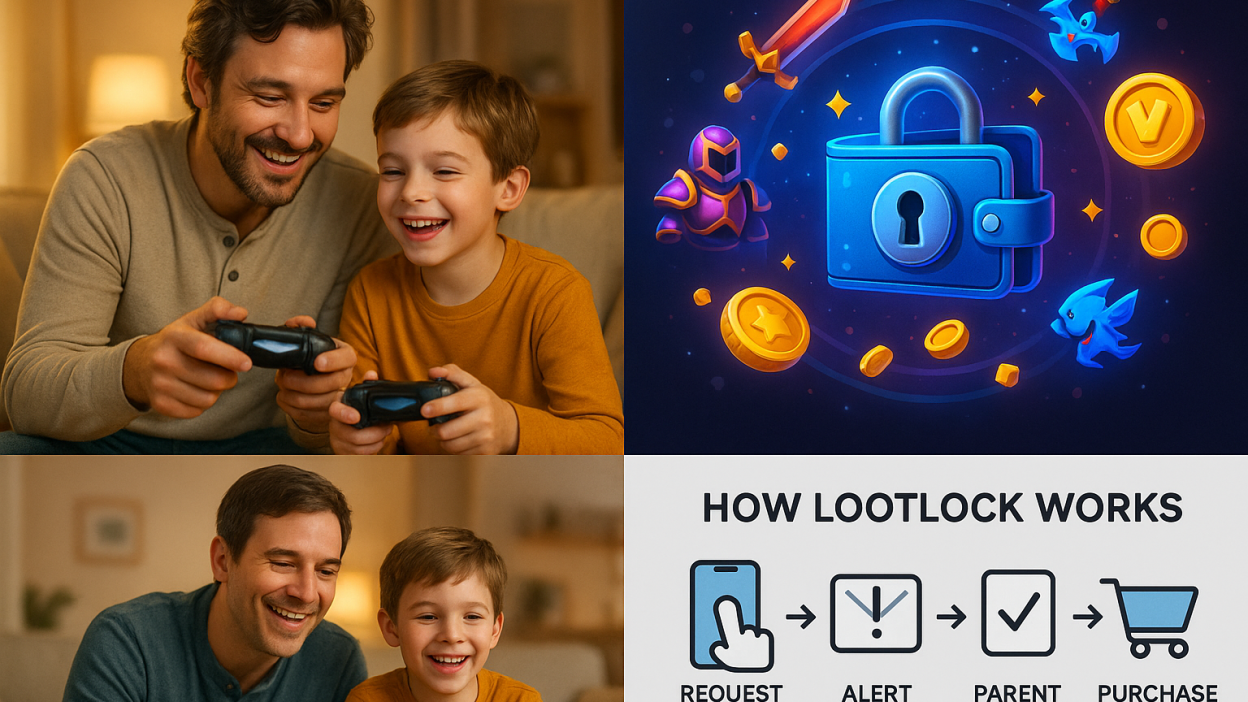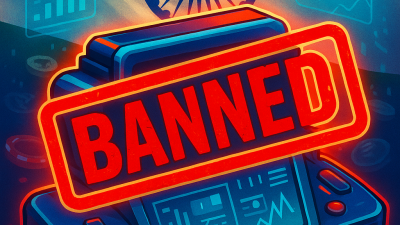Lootlock Puts Parents in Control of Kids’ Gaming Spend
For millions of children, gaming isn’t just a hobby anymore—it’s their social hub, creative outlet, and competitive arena. Platforms like Roblox, Fortnite, and Minecraft have become as central to childhood as playgrounds once were. But behind the bright graphics and shared adventures lies a hidden cost: the relentless world of in-game purchases. Skins, loot boxes, character upgrades, and digital coins may appear harmless one by one, but together they create a steady stream of spending that often leaves parents blindsided by unexpected bills.
The New Economics of Play
Unlike the one-time purchases of older console games, today’s gaming economy thrives on microtransactions. Developers design experiences where progress, identity, and social status can hinge on spending. Limited-time offers, flashy rewards, and peer influence create powerful pressure to buy. Children, who are still learning how to manage money, are especially vulnerable. For them, the difference between virtual and real currency can feel abstract—until parents discover charges piling up in their bank accounts.
Where Lootlock Fits In
Lootlock was built to meet this challenge head-on. Instead of banning purchases altogether—a strategy that often frustrates kids—it adds a crucial layer of transparency and accountability. Every purchase request triggers a notification to the parent, who can approve or decline instantly. The child still has the freedom to ask, but the final decision remains with the adult. What looks like a simple approval system is actually something much more powerful: a mechanism that turns hidden financial risks into family conversations.
Teaching Through Technology
The genius of Lootlock isn’t just in controlling spending—it’s in teaching kids how money works. Each transaction becomes an opportunity to talk about budgets, priorities, and saving. If a child requests another $10 skin, parents can ask: “Do you really want this, or would you rather save for something bigger later?” Over time, children begin to internalize the concept that money is finite, choices have consequences, and planning pays off. That’s a lesson most schools don’t teach, yet digital tools like Lootlock can deliver naturally in the flow of everyday life.
A Global Problem, A Universal Solution
The issue of overspending on games isn’t confined to one country or culture. In North America and Europe, parents voice frustration over surprise credit card bills. In Asia, concerns about gaming addiction and spending have sparked stricter policies. Regardless of region, the challenge is the same: how do families allow children to enjoy games without losing control of finances? Lootlock offers a universal answer, adapting to different family needs while respecting cultural differences in how gaming is viewed.
Balancing Freedom and Boundaries
Of course, parental control tools come with trade-offs. Some children may feel frustrated if a purchase is declined, or perceive the tool as overly restrictive. But this tension can be positive. It encourages dialogue and helps kids understand the “why” behind spending decisions. For parents, it shifts the dynamic from reactive (“Why did you spend this much?”) to proactive (“Here’s how we make choices together”). That shift not only prevents financial stress but also strengthens trust within the family.
Beyond Blocking: Building Smarter Features
The real promise of systems like Lootlock lies in how they evolve. The best tools will go beyond approvals, offering features like spending summaries, allowance modes, and even gamified savings goals. Imagine a child getting a weekly digital allowance to spend as they choose, with parents setting upper limits. Or a dashboard that shows exactly how much was spent in each game over the past month, sparking healthier discussions about value. These features transform a control mechanism into a teaching aid—one that grows with the child.
Preparing Families for the Future of Gaming
Gaming is not slowing down. With virtual worlds expanding and immersive technologies like VR and AR entering mainstream use, the opportunities for in-game spending will only increase. Parents who act now—by combining tools like Lootlock with open communication—are giving their children more than just protection. They’re giving them financial habits that will matter far beyond gaming: the ability to weigh decisions, delay gratification, and understand the impact of money in a digital-first world.
The Bottom Line
Lootlock isn’t just a parental control app; it’s a bridge between entertainment and responsibility. By keeping parents in control while allowing kids to participate, it strikes a balance that few tools manage to achieve. It makes gaming safer for wallets, less stressful for families, and more educational for children. Most importantly, it reframes digital play not as a financial trap, but as an opportunity to build trust, responsibility, and lifelong skills.
In an age where childhood is increasingly digital, parents don’t just need control—they need tools that help them guide. Lootlock delivers exactly that: not by taking the fun out of gaming, but by making sure fun never comes at the cost of financial well-being.
Lootlock isn’t just a financial tool—it’s a bridge between kids’ digital entertainment and parents’ peace of mind. By combining security, education, and family-first technology, it empowers parents worldwide to take control of gaming spend while encouraging healthier habits for children.
As gaming continues to grow, tools like Lootlock will play a central role in shaping responsible digital futures for the next generation.
FAQs
Q1: Does Lootlock block purchases completely?
No. It allows parents to set spending rules, so kids can still enjoy purchases responsibly.
Q2: Is Lootlock compatible with all games?
Lootlock integrates with major platforms and continues to expand coverage globally.
Q3: How does Lootlock teach kids about money?
By showing spending limits, real-time notifications, and encouraging conversations about choices.
Subscribe to our newsletter for expert tips, practical guides, and the latest trends delivered straight to your inbox.
Note: All logos, trademarks, and brand names referenced herein remain the property of their respective owners. The content is provided for editorial and informational purposes only. Any AI-generated images are illustrative and do not represent official brand assets.



